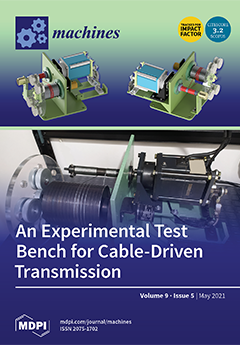The present paper deals with the optimization of the three components of cutting forces and the Material Removal Rate (
MRR) in the turning of AISI 5140 steel. The Harmonic Artificial Bee Colony Algorithm (
H-ABC), which is an improved nature-inspired
[...] Read more.
The present paper deals with the optimization of the three components of cutting forces and the Material Removal Rate (
MRR) in the turning of AISI 5140 steel. The Harmonic Artificial Bee Colony Algorithm (
H-ABC), which is an improved nature-inspired method, was compared with the Harmonic Bee Algorithm (
HBA) and popular methods such as Taguchi’s S/N ratio and the Response Surface Methodology (
RSM) in order to achieve the optimum parameters in machining applications. The experiments were performed under dry cutting conditions using three cutting speeds, three feed rates, and two depths of cuts. Quadratic regression equations were identified as the objective function for
HBA to represent the relationship between the cutting parameters and responses, i.e., the cutting forces and
MRR. According to the results, the
RSM (72.1%) and
H-ABC (64%) algorithms provide better composite desirability compared to the other techniques, namely Taguchi (43.4%) and
HBA (47.2%). While the optimum parameters found by the
H-ABC algorithm are better when considering cutting forces,
RSM has a higher success rate for
MRR. It is worth remarking that
H-ABC provides an effective solution in comparison with the frequently used methods, which is promising for the optimization of the parameters in the turning of new-generation materials in the industry. There is a contradictory situation in maximizing the
MRR and minimizing the cutting power simultaneously, because the affecting parameters have a reverse effect on these two response parameters. Comparing different types of methods provides a perspective in the selection of the optimum parameter design for industrial applications of the turning processes. This study stands as the first paper representing the comparative optimization approach for cutting forces and
MRR.
Full article





